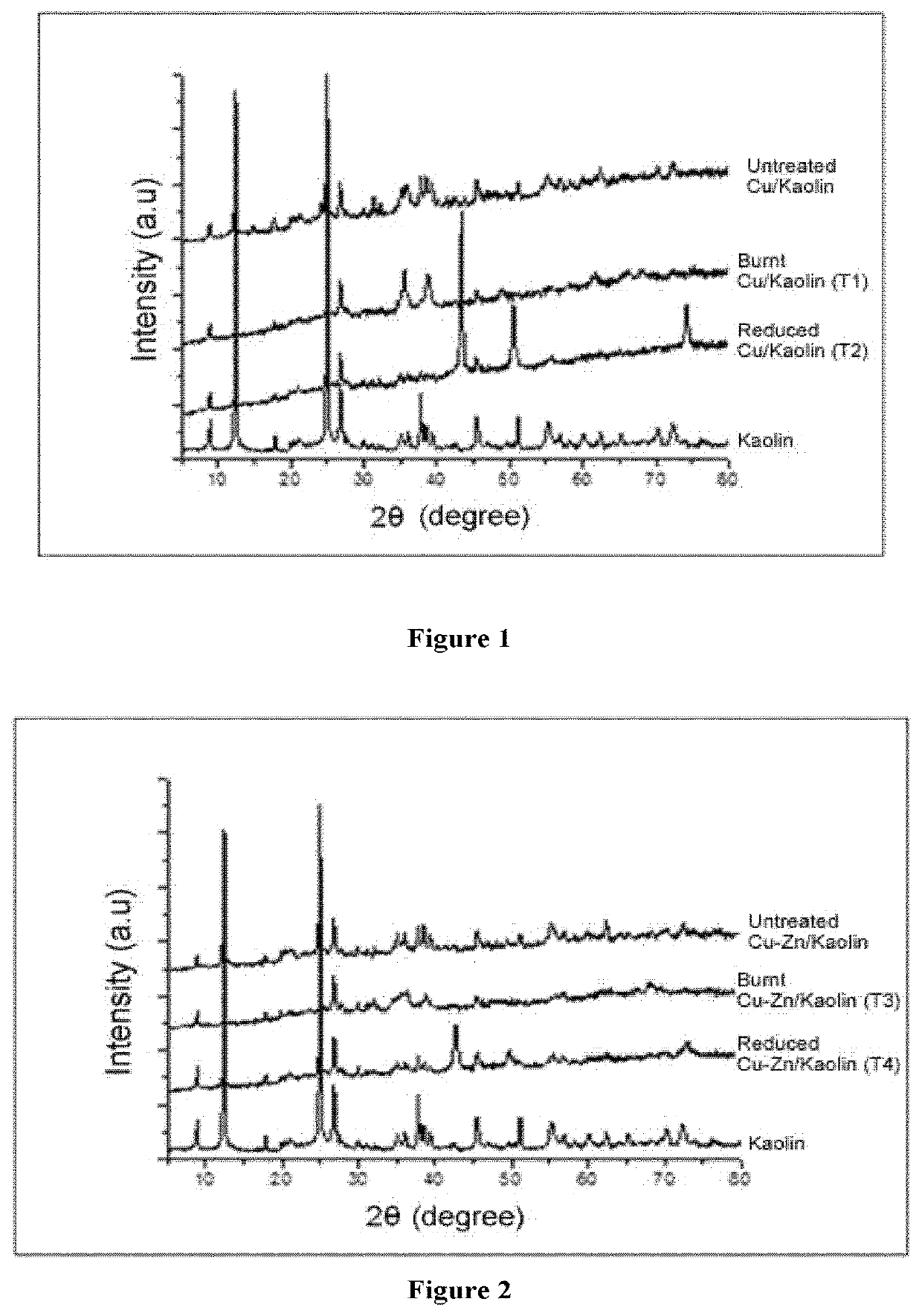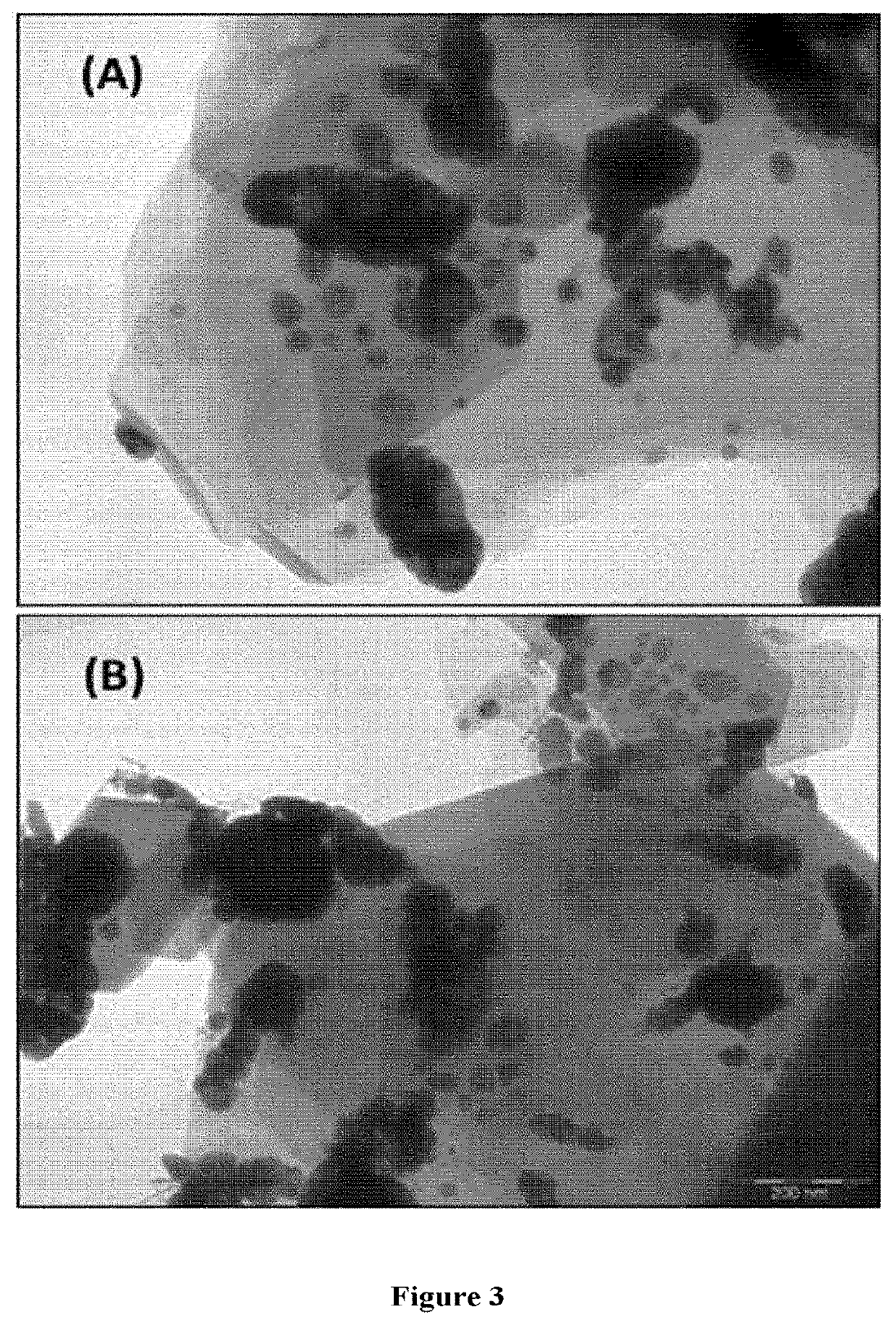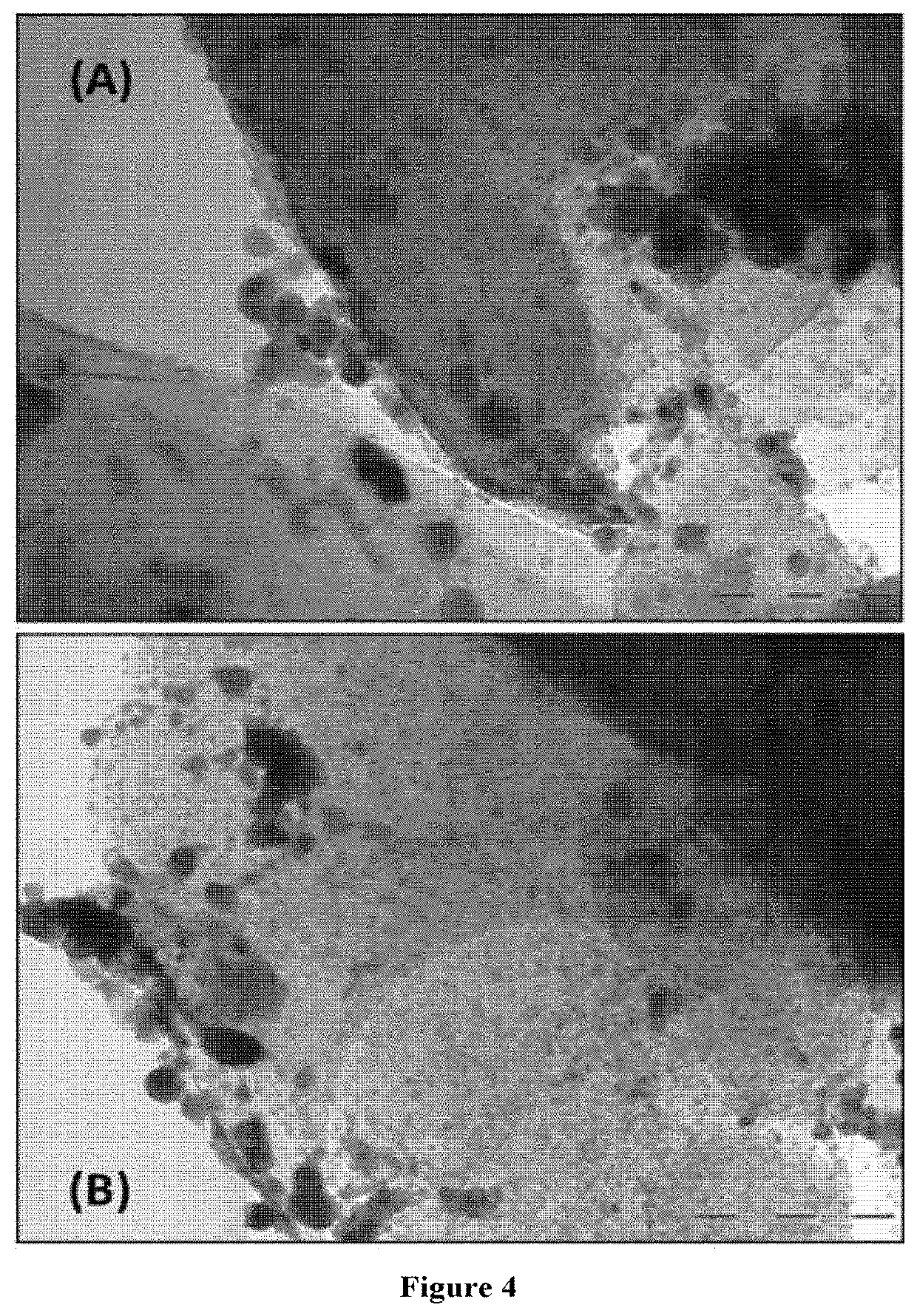Phyllosilicate-copper solid materials with biocidal activity
a technology of copper solid materials and phyllosilicate, which is applied in the field of phyllosilicatecopper solid materials with biocidal activity, can solve problems such as serious health problems and considerable damag
- Summary
- Abstract
- Description
- Claims
- Application Information
AI Technical Summary
Benefits of technology
Problems solved by technology
Method used
Image
Examples
example 1
n Material Production [T1]
[0130]The material is prepared by means of the method of depositing metal precursors on the solid in several steps. In the first step, 1.003 grams of kaolin and 100 mL of Milli Q water are added in a beaker, and the suspension is left under stirring. Next, 0.0205 grams of sodium dodecyl sulfate (SDS) acting as an anionic surfactant are added, maintaining stirring continuously to obtain a homogeneous suspension of kaolin in water. The pH of the mixture is measured (pH=5.2). In the second step, an aqueous solution of copper prepared with 0.6464 grams of Cu(NO3)2*2.5H2O precursor diluted in 15 mL of water (Milli Q) is added to the aqueous suspension prepared in the first step to thereby obtain about 15% by weight of elemental Cu (theoretical value) in the final solid material. The aqueous solution of copper is added dropwise to the aqueous suspension of kaolin. The pH of the mixture is measured (pH=4.5). In the third step, the pH of the aqueous suspension is a...
example 2
Kaolin Material Production [T2]
[0131]The material is prepared from the material prepared as described in Example 1, in which in the fifth step, the solid material is reduced in a quartz reactor and in a hydrogen atmosphere, with a temperature control program for controlling temperatures ranging from room temperature to 450° C. (with a ramp of 10° C. / min) and subsequent isothermal treatment at 450° C. for 3 hours. The resulting solid material (Cu / kaolin) is analyzed by ICP in order to know its elemental composition, determining that the Cu content is 13.0% by weight. X-ray diffraction measurements indicate that the kaolin structure is present in the material and that Cu is mainly found in the form of metallic Cu(0) after thermal treatment. SEM analysis reveals that the dimensions of the solid are the following: 30 nm±10 nm mean thickness; 300 nm mean size of micro-sized dimensions (some crystals with micro-sized dimensions of as low as 60 nm and as high as 800 nm were observed).
example 3
Kaolin Material (Metallic Cu(0)) Production [T3]
[0132]The material is prepared from the material prepared as described in Example 1, in which in the fifth step, the copper oxide deposited on the kaolin is reduced by adding an NaBH4 solution containing at least a molar ratio of 1:4 (NaBH4:Cu) dropwise on the colloidal suspension, under vigorous stirring. It is left to stir for at least 10 minutes and is then filtered, washed with deionized water and subsequently dried in an oven at 60° C.
[0133]The resulting solid material (Cu / Kaolin) is analyzed by ICP in order to know its elemental composition, determining that the Cu content is 13.05% by weight. X-ray diffraction measurements indicate that Cu is mainly found in the form of metallic Cu(0). SEM analysis reveals that the dimensions of the solid are the following: 50 nm±10 nm mean thickness; 500 nm mean size of micro-sized dimensions (some crystals with micro-sized dimensions of as low as 100 nm and as high as 1000 nm were observed).
PUM
 Login to View More
Login to View More Abstract
Description
Claims
Application Information
 Login to View More
Login to View More - R&D
- Intellectual Property
- Life Sciences
- Materials
- Tech Scout
- Unparalleled Data Quality
- Higher Quality Content
- 60% Fewer Hallucinations
Browse by: Latest US Patents, China's latest patents, Technical Efficacy Thesaurus, Application Domain, Technology Topic, Popular Technical Reports.
© 2025 PatSnap. All rights reserved.Legal|Privacy policy|Modern Slavery Act Transparency Statement|Sitemap|About US| Contact US: help@patsnap.com



